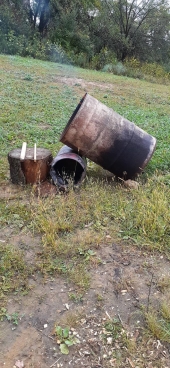
 3
3








John Daley Bendigo, Australia The Enemy of progress is the hope of a perfect plan
Benefits of rainfall collection https://permies.com/t/88043/benefits-rainfall-collection
GOOD DEBT/ BAD DEBT https://permies.com/t/179218/mortgages-good-debt-bad-debt
 5
5








I don't own the plants, they own me.
 8
8




 1
1




--------------------
Be Content. And work for more time, not money. Money is inconsequential.












 1
1




God of procrastination https://www.youtube.com/watch?v=q1EoT9sedqY









God of procrastination https://www.youtube.com/watch?v=q1EoT9sedqY
 1
1









God of procrastination https://www.youtube.com/watch?v=q1EoT9sedqY
 4
4









 1
1




God of procrastination https://www.youtube.com/watch?v=q1EoT9sedqY
 1
1




 1
1





 1
1




Glenn Herbert wrote:You definitely want to be burning as hot as possible, and generally that means fast. A batch box is designed to burn at a steady rate while combusting as completely as possible; Peter van den Berg's tests have generally run for around an hour for a 6" unit.
I don't think I would extend the exhaust duct any farther into the bench cavity. Flow will be sedate enough at that distance from the core that I think you will get good stratification in the bell and maximum heat extraction without more duct.
God of procrastination https://www.youtube.com/watch?v=q1EoT9sedqY





 1
1




best regards, Byron
 2
2













|
It's weird that we cook bacon and bake cookies. Eat this tiny ad:
The new purple deck of permaculture playing cards
https://www.kickstarter.com/projects/paulwheaton/garden-cards
|



